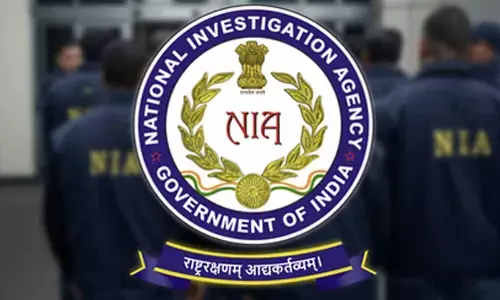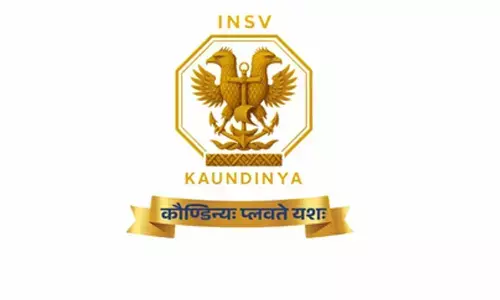Making loan default difficult

The performance results of the State Bank of India (SBI) for FY16 has provided great relief to the banking sector, which otherwise was besieged with asset quality woes. The quantum of non-performing assets (NPAs) of banks is set to get close to Rs 6 trillion. The portion of stressed assets in the banks now works out to over 13 percent.
The performance results of the State Bank of India (SBI) for FY16 has provided great relief to the banking sector, which otherwise was besieged with asset quality woes. The quantum of non-performing assets (NPAs) of banks is set to get close to Rs 6 trillion. The portion of stressed assets in the banks now works out to over 13 percent.
Bank loan defaulters will have to be eventually looked down upon in the society to create a peer pressure to honour commitments
But SBI has assured that the spree of further loan delinquency is in check and its future outlook on slippage will not be more than one per cent as against the outlook of other banks hovering between two and three per cent of their portfolio. Though the net NPAs of some of the banks have surpassed their net worth causing a lot of anxiety, the stakeholders can observe that the loans which are now classified as NPAs are all not bad loans.
Many of them are likely to turnaround as the revival of economy hastens. The economy clocking a 7.6 per cent growth in FY16 and a 7.9 per cent growth in Q4 of FY16 reinforces the trends. Thus, provisions now made against NPAs can be added back to the profitability of the banks, once ailing units start reviving and honouring their loan commitments.
Thus, it is a temporary proactive prudential measure which is good for the banking sector in the long-run. Such early diagnosis (classifying as NPAs) triggers early treatment before they (NPAs) turn terminally ill. Some of such classified large loans belong to reputed business houses who would like to keep their business running and have capacities to organise repayments.
As such, one of the redeeming features of the Asset Quality Review (AQR) initiated by the RBI intended to clean up balance sheets of banks is a widespread recognition of “Nonpayment of Bank Loan” as a social disease. Loan repayment now standing at the bottom of payment commitments (priority) of borrowers will perforce inch it up to occupy better priority in the league, if not at the top.
Bank loan defaulters will have to be eventually looked down in the society to create a peer pressure to honour commitments. Unless the loan funds of banks are recycled through prompt repayment, other entrepreneurs will not be able to get the benefit of loans. Lack of seamless flow of financial intermediation may eventually retard economic growth.
A bank loan defaulter thus not only hits his own business by not paying dues but also deprives a potential entrepreneur from getting bank loans. Hence, it becomes a social menace. Rightly so, many banks are approaching appropriate authorities to prevent loan defaulters from travelling abroad to act as a deterrent.
In future, many of the social privileges may be deprived to such section of the society. At the same time, a prompt repayment of bank loans can earn better credibility and can enjoy better reputation in the financial sector. Prompt repayment of loans may also lower cost of borrowing based on good track record of credit history.
Logically, a low risk borrower for the bank will be a privileged customer getting better and differentiated qualitative service. Thus, an outcome of the prompt recognition of NPAs is building up positive social ecosystem that can improve a loan repayment culture in the society. Banks hitherto hesitant to lend can take a cue from the transformation in the social dimensions of loan repayment.
In this league, banks may also take into consideration the fact that the ‘Bankruptcy Law’ has been recently enacted, replacing the earlier laws governing insolvency from 1909 to 1920 and is credit-positive. It increases the bargaining power in providing distressed asset resolutions.
It provides a method for banks and other creditors to force the restructuring and /or liquidation of companies well in time that don’t pay or are revenue deficit for a long time in their business operations. It also addressed the fact that there is currently no clear legal mechanism for a business to close down, meaning business owners often face no choice but to continue operating broken companies incurring further losses.
The maxim of ‘a stitch in time saves nine, will apply enabling banks to realise the debt before their underlying assets erodes in value. The RBI already empowered banks by introducing the ‘Strategic Debt Restructuring (SDR)’ tool wherein banks can convert portion of their debt into equity and obtain a clout on management of the loan defaulting company.
In the same way, willful defaulters identified by banks will be open to stern action. According to Securities and Exchange Board of India (SEBI), willful defaulters of banks have been barred from (a) raising public funds (b) setting up market intermediaries such as mutual funds and brokerage firms (c) controlling other listed companies – cannot be on the board of any listed company.
Many such measures are contemplated to make difficult for bank borrowers to default. Hence, the current weak legal framework for asset resolution has been a key structural credit weakness for banks that has been addressed appropriately. How these measures are enforced and made to work to reduce NPAs of banks will rest with the lenders.
Besides lenders, other agencies involved in NPA resolution will have to join together in creating a robust loan repayment culture so that seamless financial intermediation supports economic growth. In the melee of mounting NPAs, all the stakeholders have come to realise the significance of prompt repayment of bank loans, including the present set of NPA borrowers.
Even good companies at the border line are seriously considering sale of noncore assets to liquidate bank loans in time. Similarly, overleveraged borrower companies are exploring possibilities to thin down their bank liabilities to prevent the episodes of the type Kingfisher airlines had witnessed.
Hence forth both banks and borrowers will be equally sensitive in ensuring that liquidity of banks will seamlessly flow to deserving entrepreneurs. Genuine instances of failure of business can be taken care by the bankruptcy code to the mutual satisfaction of borrower and lender. An entry and exit route of business/entrepreneurship has been better streamlined.
Taking all the positive legal developments into account and ills of loan default well shared with the society, it will be difficult for bank borrowers to default in future. Hence a deserving entrepreneur will be able to avail loans from banks, apply them to right commercial cause, repay and again avail loans with a seamless cycle supporting economic growth.

















